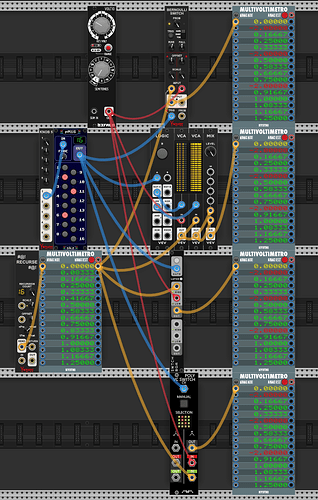I gave you a solution quite some time ago on the other thread with Venom Berrnoulli Switch
In that description I used the probability and swap mode to randomly swap out channels. But it is easy to adapt for the situation you show in this thread.
There are many polyphonic capable switches as I show in the patch below:
Poly Switches.vcv (2.7 KB)
For this setup I used Venom Recurse to generate 16 chromatic steps starting at C4. It starts at 0V and adds 1/12V to each successive channel. Pretend this is your starting sequence of 16 notes.
I use Venom Knob 5 to generate 16 high gates. By default it outputs monophonic output, but the module and knob context menus let you choose the polyphony for each knob, or the module as a whole. This feeds the Sickozell Poly Mute where you choose which channels get swapped out.
For the Befaco Voltio I chose -2V (C2) so that it is easy to see which channels have been swapped by the red color in the MultiVoltimetro. Note that there is no need to explicitly clone the signal to 16 channels. Most polyphonic modules will automatically clone a mono input to match the channel count used by the rest of the module.
Now for the actual polyphonic switches:
Venom Bermoulli Switch: I am using the Gate mode with probability set to 100%
VCV poly switch construct: @rareairbikeco showed how to use a VCV Fade as a poly switch. I have used that technique many times - it works great. For my example I demonstrate how you can construct a poly switch using logic, a couple VCAs, and a mixer.
Bogaudio Switch: This works well except for an irritating quirk. At startup or when constructing the patch, you must set the polyphonic gate input channels to a low state before it will recognize any high gates.
Count Modula Poly Switch: This one also has a quirk. If you change either input, then you must disconnect and reconnect the output before you will get any output.
